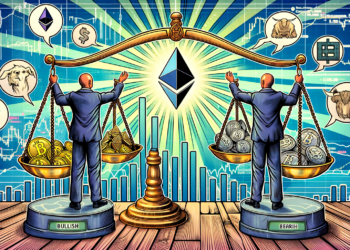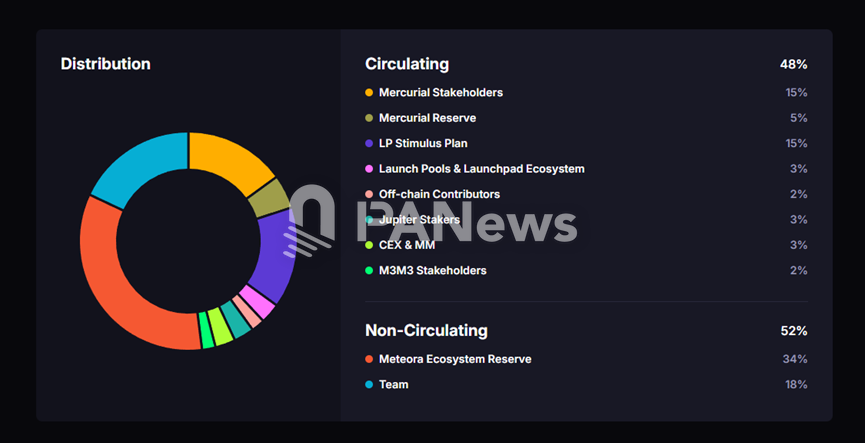Written by: On-chain Apocalypse
How a forgotten status code is unlocking a trillion-dollar market.
Imagine your AI assistant wants to check today’s stock prices for you, but it’s stuck behind a paywall—no credit card, no account, not even a clue how to “pay.” This sounds like something out of a sci-fi novel, but by 2025, it’s a real-world problem.
The solution to this dilemma is a payment revolution designed for AI agents to “buy things themselves”—the x402 protocol.
And the organization turning this “golden key for AI payments” from theory into reality is a neutral foundation backed by giants like Coinbase and Cloudflare: the x402 Foundation.
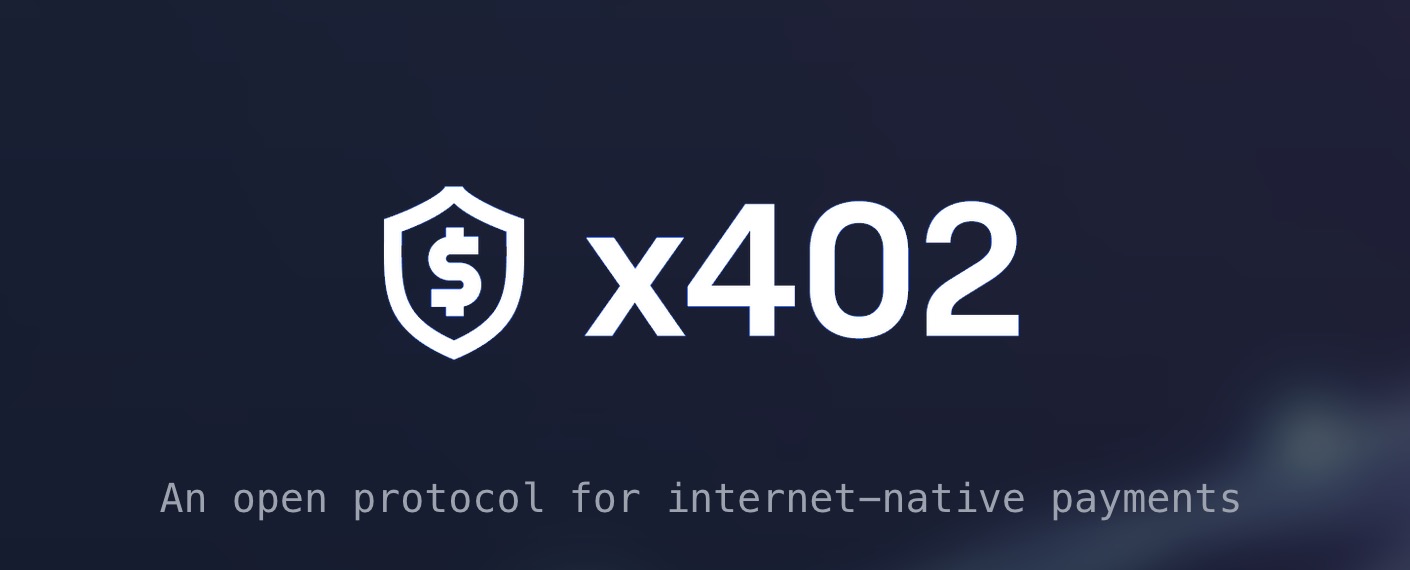
1. From Forgotten Archives to Hot Protocol: The “Archaeology” of x402
HTTP 402: The Internet’s “Unfinished Symphony”
The story begins in 1999.
At that time, the HTTP/1.1 specification defined a status code called “402 Payment Required,” meaning “Hey, you need to pay to access this resource.” But the problem was, no one knew how to collect money securely and conveniently on the Internet back then, so this status code was like a blank check, shelved for over twenty years.
The best innovations are often not about inventing something new, but about giving old components new life in a different environment.
It wasn’t created out of thin air, but cleverly revived the dormant HTTP 402 status code. This “forgotten tool” has found its destiny in the AI era.
The protocol’s working principle can be understood through a daily scenario:
-
AI requests service: An AI assistant wants to get the latest weather data.
-
Server requests payment: The API server returns a “402” code, saying, “Sure, but please pay $0.001 first.”
-
AI pays automatically: The AI assistant immediately sends a micro stablecoin payment via blockchain (such as Base).
-
Service fulfilled: The server confirms receipt and instantly returns the data.
The entire process is completed automatically within seconds, no redirects, no logins, almost zero fees. This fixes the Internet’s “payment flaw,” allowing value to flow as freely as data. For AI agents needing massive, high-frequency, micro-transactions, this is simply the “perfect partner.”
Why is it suddenly popular now?
Because this is a payment revolution for the machine economy, and the x402 protocol is at the eye of the storm.
Currently, industry trends are driving the rise of the machine economy. This week, a16z’s crypto division mentioned in its latest crypto status report that by 2030, the scale of autonomous transactions could reach $30 trillion.
The Coinbase development team also pointed out that AI agents are ushering the machine economy into a new era: without human intervention, AI agents can autonomously complete everything from payments to data storage. These trends make the x402 protocol the best candidate to solve payment issues.
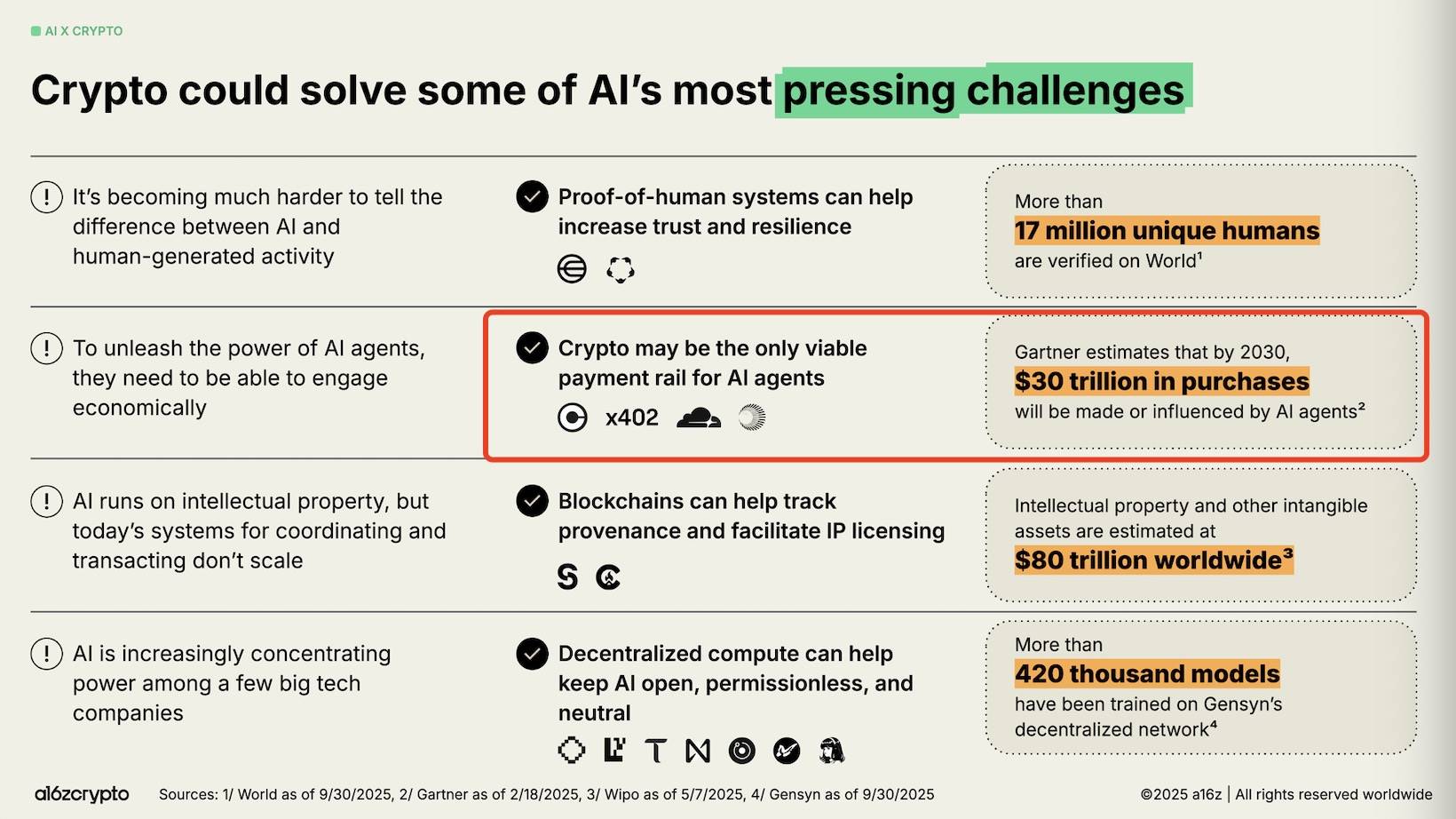
2. The Driving Force: The “Tale of Two Cities” of the x402 Foundation
Coinbase + Cloudflare: A match made in heaven or a marriage of convenience?
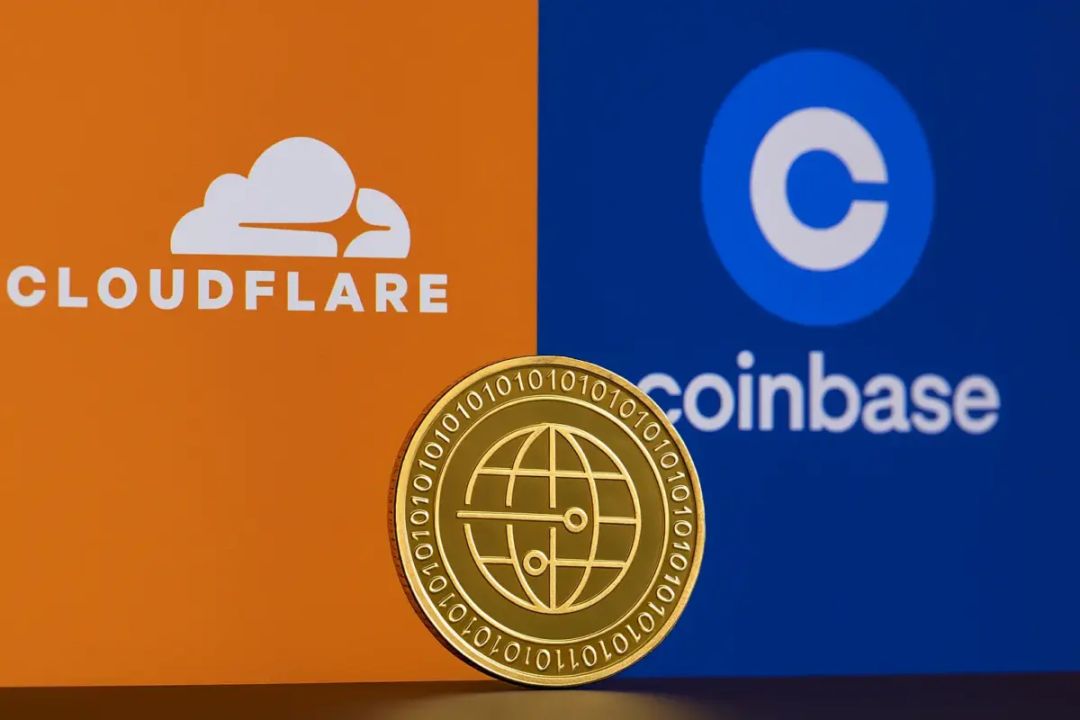
In September 2025, two seemingly unrelated giants came together:
-
Coinbase: One of the world’s largest cryptocurrency exchanges, holding the infrastructure for stablecoin payments
-
Cloudflare: The CDN giant serving 20% of the world’s websites, controlling key nodes of Internet traffic
Why these two?
Coinbase has payment capabilities but lacks a distribution network; Cloudflare has a global network but needs a new business model. x402 perfectly complements both: Coinbase provides blockchain payment technology, Cloudflare provides a global edge computing network, and together they build the infrastructure for the “machine economy.”
Core Team: The Fusion of Web2 + Web3
The x402 Foundation adopts an open governance model, with core members including:
1. Dan Kim (VP of Business Development at Coinbase): Responsible for strategic partnerships and ecosystem building
-
Core value: The “super connector” of the traditional financial world
-
Career highlights: Led global payment strategies at giants like Visa and Airbnb, with extensive institutional cooperation experience
-
Strategic significance: Opens doors to traditional financial institutions for x402, ensuring compliance and mainstream adoption
2. Erik Reppel & Nemil Dalal (Coinbase): Co-authors of the x402 whitepaper
-
Division of labor: Erik is responsible for technical architecture, Nemil focuses on product strategy and compliance
-
Core contribution: Co-authors of the x402 whitepaper, building a comprehensive “technology-market-regulation” trinity framework
-
Unique advantage: Their combination covers the entire chain from underlying technical standards to market implementation, providing both technical and market guarantees for the project.
3. William Allen (Cloudflare): Provides network infrastructure support
-
Technical assurance: Top expert in global network infrastructure, providing enterprise-level stability for x402
-
Value demonstration: Cloudflare serves 20% of global website traffic, and its technical standards endorse x402
-
Strategic role: Ensures high availability and security of the protocol worldwide
Team chemistry: 1+1+1>3
Coinbase’s compliance DNA × Cloudflare’s infrastructure strength = the perfect gateway for traditional institutions
This combination precisely targets the core pain points of traditional institutions: embracing Web3 innovation while ensuring compliance and security. The team forms an “iron triangle” of compliance, technology, and infrastructure.
Ultimate goal: To become the “golden channel” for Web2 giants entering Web3, gaining policy recognition while seizing the payment gateway in the machine economy era.
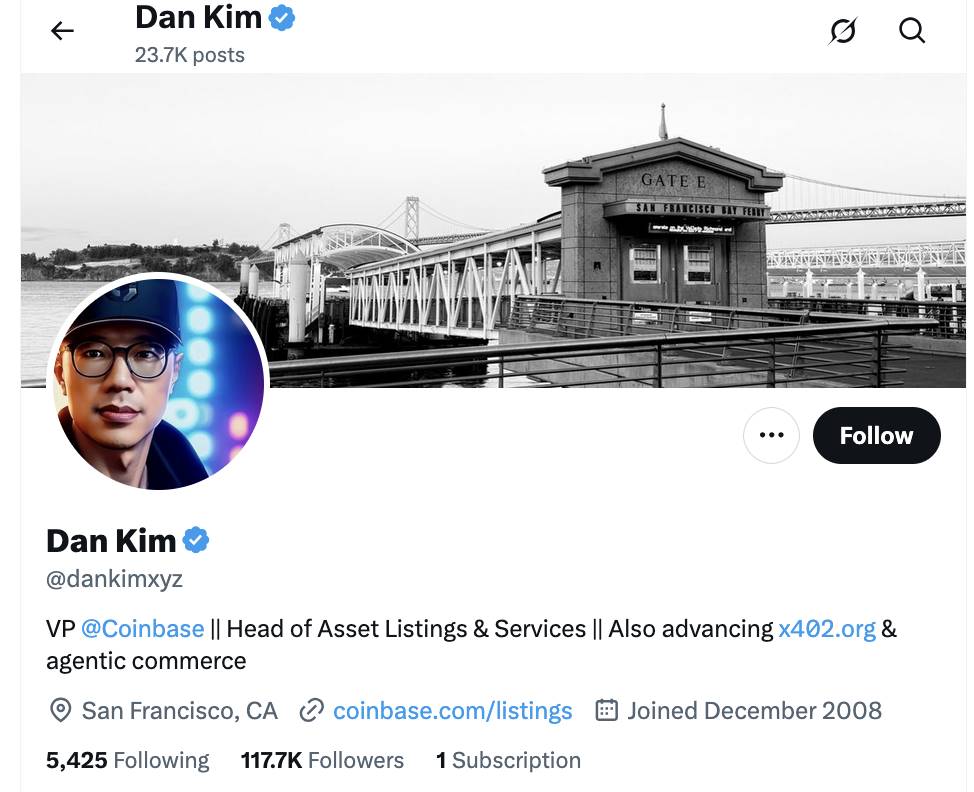
Currently, about 60 contributors from various ecosystems are participating in protocol development. It doesn’t belong to any one company but is a neutral governance body with the mission to:
-
Promote standardization: Make the x402 protocol an official web standard of the W3C (World Wide Web Consortium).
-
Build the ecosystem: Attract global developers to build applications on x402 through funding, tools, and hackathons.
-
Achieve decentralization: Ultimately hand over protocol governance to the community.
“Tangible” Results: From Code to Ecosystem
The x402 Foundation is not just about ideals, but about action. In just a few months, they have built a rich and diverse ecosystem:
-
Representative projects: Questflow (AI agent orchestration), PayAI Network (cross-chain payments), AurraCloud (AI Agent infrastructure).
-
Data performance: 524,000 transactions completed in the past 90 days, totaling over $520,000, with rapid growth.
-
Developer support: x402.org provides specifications and SDKs, with Cloudflare and thirdweb tools supporting integration with 170+ chains and 4,000+ tokens.
Hackathons and bounty programs have attracted developers worldwide, with over 200 new projects incubated based on x402.
More importantly, the foundation remains neutral, ensuring the protocol is open to everyone—whether you’re a major company or an independent developer, you can expand freely.
Giants Enter: From Pilots to Strategic Partnerships
Even more important is industry-level recognition:
-
Google: Integrated x402 into its A2A and AP2 frameworks
-
Visa: Launched payment solutions combining its Trusted Agent Protocol
-
Circle: Provides USDC stablecoin support
-
thirdweb: SDK supports 170+ chains and 4,000+ tokens
What does this mean? It’s no longer a niche experiment in the crypto circle, but a serious layout by traditional tech and financial giants.
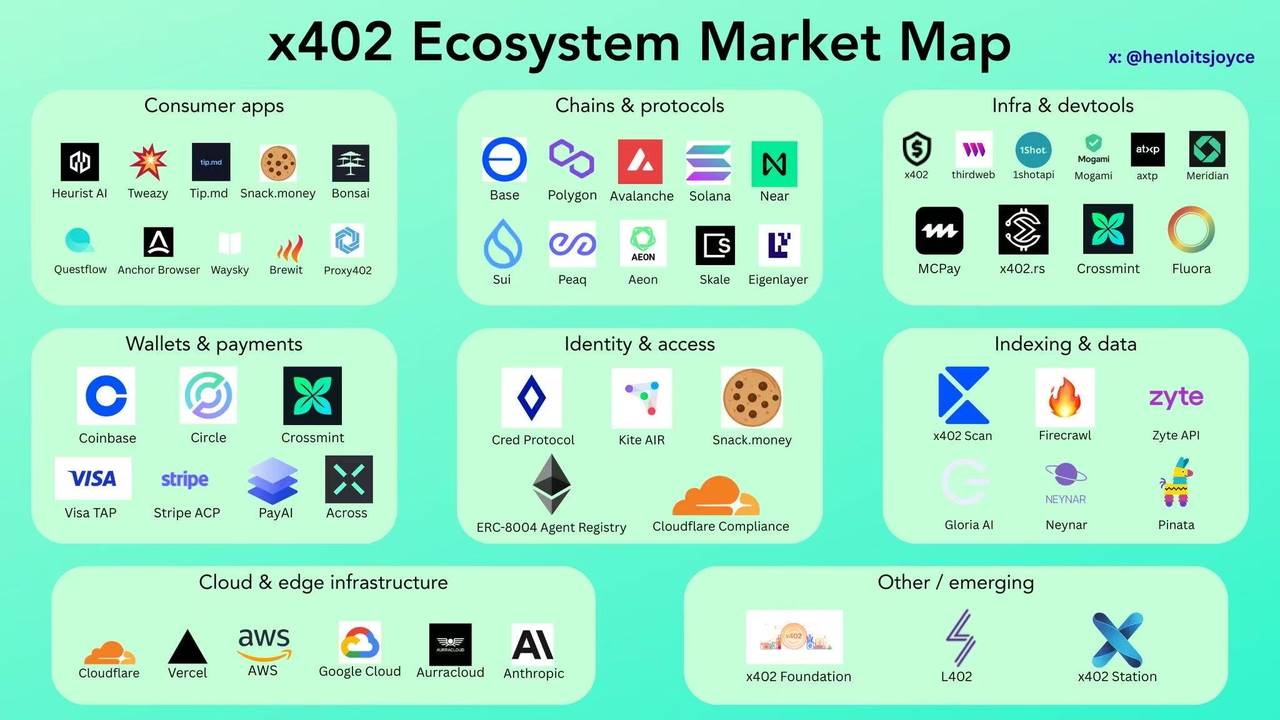
3. In-Depth Thinking: Why x402 Could Change Everything
Economic Principle: The Power of Lowering Transaction Costs
Economist Ronald Coase once said, the fundamental reason for the existence of firms is to lower transaction costs. What x402 does is essentially the same—it brings payment transaction costs close to zero:
-
Time cost: Reduced from minutes to seconds
-
Cognitive cost: No need to register, log in, or remember passwords
-
Technical cost: Developers can integrate with just a few lines of code
-
Economic cost: Only on-chain gas fees, no protocol fees
When transaction costs are low enough, previously uneconomical transactions become feasible. That’s why concepts like micropayments, pay-per-use, and AI agent autonomous transactions are suddenly becoming reality.
Network Effect: The “Critical Mass” of Payment Protocols
Payment networks have a feature: the more people use them, the more valuable they become. The cleverness of x402 lies in:
-
Open standard: Anyone can implement and extend it
-
Multi-chain compatibility: Not tied to a specific blockchain
-
Backward compatibility: Seamlessly integrates with existing HTTP infrastructure
This design makes it easier for x402 to reach “critical mass”—when enough services support x402, those that don’t will seem outdated.
4. Challenges and Opportunities: The Reality Check
The x402 Foundation’s vision is as vast as the stars and the sea, but the road ahead is not all smooth sailing.
Challenges:
1. Applying for W3C National Standard:
To become a global standard requires a long game and recognition from international organizations like the W3C.
How hard is this “passport”? Becoming an international standard is like applying for a Nobel Prize: you need solid technology, peer recognition, and patience for a lengthy process. W3C standardization usually takes 3-5 years, involving proposals, drafts, testing, and community voting.
2. Fierce Competition in Reality:
Google is pushing the AP2 protocol (embedding bank cards and transfers into AI applications like APIs), and new approaches like Model Context Payment (MCP) are emerging. The good news is, Cloudflare has already built x402 support into its Agents SDK and MCP servers, marking the first step toward “multi-track interoperability.”
3. Ecosystem Maturity:
Despite rapid growth, the ecosystem is still in a very early stage. As a new protocol, x402’s ecosystem is just getting started. Coinbase has provided reference implementations and developer toolkits, but multi-party implementations and interoperability testing are still lacking. To become an industry standard, x402 must attract more third-party developers and infrastructure providers and establish a comprehensive interoperability testing matrix.
Opportunities:
However, the opportunity is historic. As the AI agent economy is expected to reach $10 trillion by 2030, a native, decentralized payment layer is indispensable. x402 is well positioned to become this core infrastructure.
5. How to Participate in the X402 Ecosystem
The Ecosystem page on the x402 protocol’s official website lists the current ecosystem overview. Clicking through, you’ll quickly realize this is still an early journey: many projects link directly to technical documentation, and quite a few simply direct you to GitHub. In other words, the narrative comes first, while products and applications are still on the way.
But early doesn’t mean without structure—the composition of participants already outlines three clear capital mainlines:
-
First, infrastructure builders: Coinbase is the most obvious beneficiary, not only a participant but also a rule-maker and foundation layer builder.
-
Second, the first “residents”—AI agent applications. Especially projects that have announced integration. AI agent technology is a current hot topic in crypto, and the x402 protocol has already attracted the attention of several AI agent projects. Their integration will further drive the development and application of the x402 protocol.
-
Third, location and neighborhoods—Base ecosystem. x402 has chosen Base as its main battleground for a reason. Choosing the battleground is choosing the growth curve: where developers gather often determines the toolchain, distribution, and path dependencies of mindshare.
Conclusion: From the Information Internet to the Value Internet
The Internet took thirty years to solve the free flow of information, but value transfer has always been flawed. We’re used to getting information for free, but when payment is required, we’re bogged down by friction: registering accounts, linking bank cards, remembering passwords, handling refunds...
What x402 wants to change is exactly this situation.
It makes payment as simple as sending an email, allows AI agents to autonomously complete transactions like humans, and lets developers focus on creating value instead of handling payment logic.
This isn’t another declaration of “disruptive technology,” but a pragmatic solution: solving the most practical problems in the simplest way.
If successful, x402 could become the HTTP of the value Internet. If it fails, at least it proves that even a forgotten status code can make waves.
Either way, this is a story worth following.


